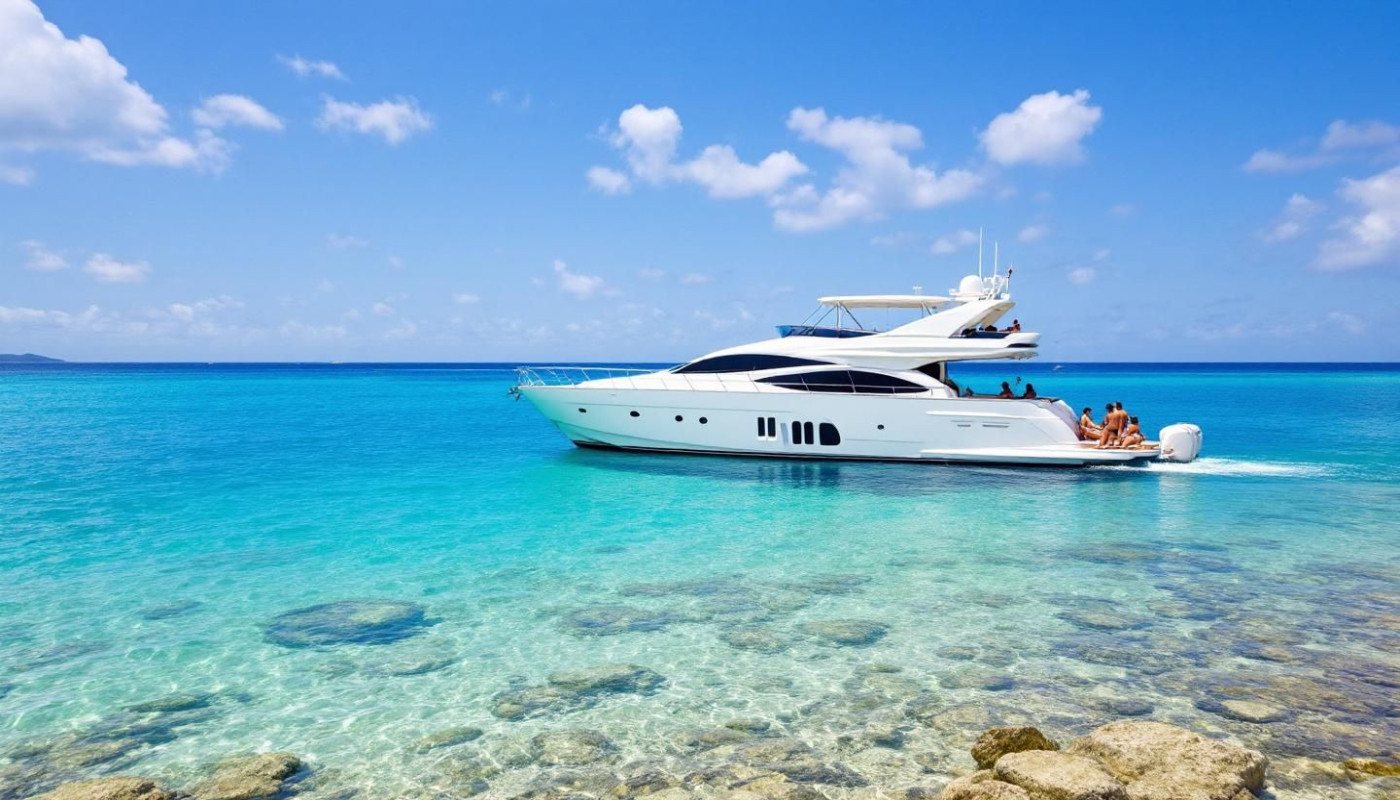Table of contents
Embarking on a yacht charter for the first time is an exciting adventure filled with endless possibilities. Navigating this luxurious experience requires some preparation to ensure everything sails smoothly from start to finish. Discover the key considerations and expert guidance that will transform your maiden voyage into a memory worth cherishing—read on to uncover indispensable advice crafted for first-time yacht charterers.
Choosing the right yacht
Selecting the most suitable yacht for a charter begins with assessing group size, as the number of cabins and available space directly affects comfort and privacy. For those prioritizing luxury and speed, a motor yacht offers powerful engines, ample living areas, and smooth cruising, making it popular for exploring multiple charter destinations in less time. Sailing yachts attract enthusiasts seeking a classic experience and eco-friendly travel, while catamarans provide stability and generous deck space, ideal for families or groups valuing both comfort and safety. On-board amenities such as water toys, Wi-Fi, and chef services should align with your travel planning goals, ensuring every guest’s needs are met.
Budget is a pivotal consideration, with options ranging from fully crewed luxury yachts to the more hands-on bareboat charter, where you captain the vessel yourself. Aligning the chosen yacht type with the itinerary is key; certain vessels are better suited to specific waters or destinations, such as shallow lagoons best accessed by catamarans. Consultation with a charter broker, who brings a wealth of knowledge about available yachts, local regulations, and seasonal factors, enhances the overall experience and reduces potential complications. With expert guidance and careful attention to personal preferences, the right yacht will turn your journey into an unforgettable adventure.
Understanding charter contracts
A charter contract, formally known as a charter party, lays the foundation for a seamless yacht experience by detailing the booking process, payment schedule, cancellation policy, and security deposit requirements. The booking process typically involves selecting a yacht, confirming availability, and signing the contract, with an initial deposit—often 25-50 percent of the total cost—required to secure the reservation. The payment schedule usually divides the overall fee into manageable installments, with the balance due several weeks before departure. Guests must pay close attention to cancellation policy clauses, which explain penalties or refund conditions if plans change unexpectedly, as well as the security deposit section, which protects the owner against potential damages or losses during the charter.
Before signing, it is vital to review every aspect of the charter party, ensuring that all expectations around inclusions, exclusions, and liabilities are clear. A standard agreement will outline the yacht’s specifications, crew responsibilities, itinerary options, and insurance coverage, giving guests a complete picture of their rights and obligations. Consulting a maritime lawyer provides the highest level of assurance that the contract protects your interests, especially for first-time charterers. Familiarity with the details of the charter contract empowers guests to make informed decisions and avoid misunderstandings throughout the charter journey.
Planning the perfect itinerary
Creating a customized yacht itinerary begins with collaborating closely with a professional yacht captain, as this expert crafts the passage plan by considering various factors that guarantee a seamless experience. The captain evaluates weather conditions and forecasts to plot the safest and most enjoyable charter route, while taking into account the optimal travel destinations for the time of year. Including local attractions and seasonal events into the vacation planning process can enhance the journey, providing opportunities to explore unique cultural highlights and hidden gems along the way. Incorporating the interests and preferences of all group members ensures the itinerary offers a balance of relaxation and adventure, such as combining tranquil anchorages with stops for water sports, sightseeing, or experiencing the local cuisine. By integrating these elements, the passage plan becomes both flexible and comprehensive, maximizing enjoyment while minimizing risks and logistical complications during the yacht charter.
Embracing onboard etiquette
Understanding yacht etiquette creates a smooth and enjoyable experience for both guests and crew. Clear communication with the crew is highly valued; requests or questions should be made respectfully, recognizing their professional expertise. Guests are encouraged to respect both the privacy of crew quarters and the boundaries of other guests, avoiding entering restricted areas. Observing safety protocols is non-negotiable, from listening to safety briefings to following guidelines regarding footwear, swimming, and equipment use. Tidy common areas are a shared responsibility—storing belongings thoughtfully and leaving spaces as found not only enhances comfort but also demonstrates appreciation for the crew’s efforts. Tipping customs on yachts generally suggest 10-20% of the charter fee, provided at the end of the voyage, often given to the captain for distribution. Familiarity with APA (Advance Provisioning Allowance) procedures is also beneficial, as this fund covers provisions and expenses, and understanding its use ensures transparency and smooth operations. Practicing these yacht charter tips transforms the onboard atmosphere and supports positive crew interaction, making the journey memorable for everyone involved.
Packing smart for your journey
Curating a yacht packing list is a step that can genuinely impact the enjoyment and comfort of a charter voyage. Focus on lightweight, breathable clothing that adapts to changing weather, as onboard space is at a premium and storage is sometimes limited. Emphasize travel essentials such as UV-protective hats, sunglasses, and reef-safe sunscreen to guard against constant sun exposure. Footwear should be non-marking and slip-resistant; soft-sided luggage is highly recommended, as it can be easily folded and stowed in compact yacht storage areas, maximizing every bit of space available.
When preparing luggage, consider activities both on deck and ashore; include swimwear, casual evening attire, and all-weather jackets for windier days or cooler nights. Multipurpose garments, such as sarongs or quick-dry shorts, help reduce bulk and provide flexibility for various leisure or sport-based experiences. Charter preparation also involves packing personal items like medications, travel documents, and electronic chargers, all kept in waterproof pouches for safe access. Using packing cubes or compression bags can further streamline organization, making it easier to find what you need without disrupting the limited stowage.
In the interest of yacht etiquette and comfort, packing lightly is strongly advised by experienced yacht stewards. Avoid hard-shell suitcases, as they are cumbersome and can damage yacht interiors. Instead, opt for soft-sided luggage, which fits more easily into under-bed compartments or small lockers. Remember that most yachts provide towels and basic toiletries, so only bring what is truly necessary. This approach leaves more room for souvenirs or items that enhance the journey, contributing to a hassle-free and enjoyable adventure at sea.
Anyone seeking more detailed yacht packing list recommendations and luggage tips for charter preparation will find this great post to read. The site offers guides on yacht storage, destination-specific requirements, and expert advice to ensure an efficient and enjoyable travel experience.
On the same subject

Seasonal Sailing Conditions Across The Mediterranean Sea

Eco-friendly travel in Scandinavia - Sustainable adventures off the beaten path

Geocaching: The Treasure Hunt for Digital Age Tourists

Navigating The Luxury Landscape Of Paris Hotels For The Discerning Traveler

